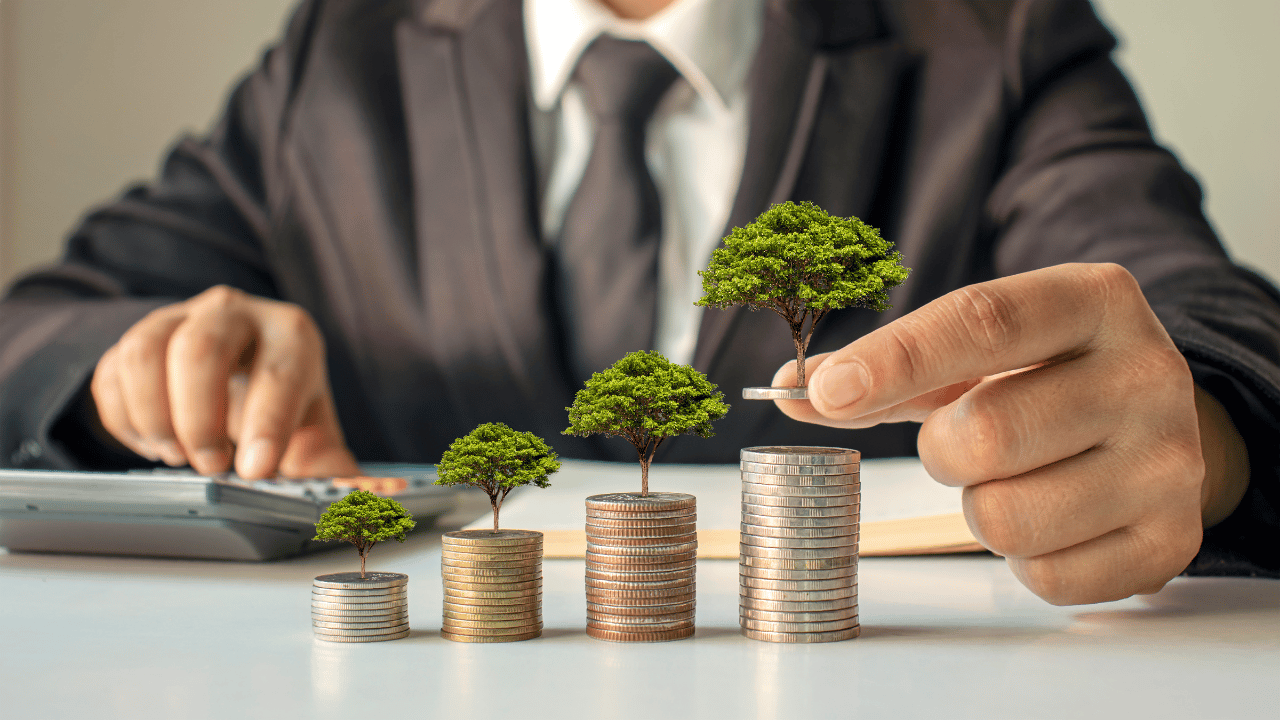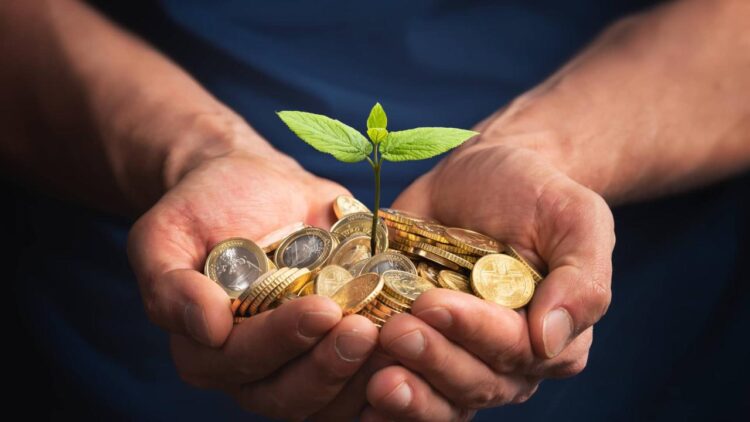The world stands at a critical juncture, facing the undeniable challenges of climate change and dwindling fossil fuel reserves. In this landscape, green energy, also known as renewable energy, has emerged not only as a vital solution for environmental sustainability but also as a highly lucrative and increasingly stable investment opportunity. For astute investors, understanding the diverse facets of this sector is paramount to unlocking its substantial potential. This comprehensive guide delves into the various avenues of green energy investment, exploring their unique characteristics, advantages, and the crucial factors to consider for long-term success and maximized returns.
Why Green Energy Matters More Than Ever

The transition to green energy is no longer a niche concept but a global imperative driven by a confluence of factors. Governments worldwide are implementing ambitious policies and incentives to accelerate this shift, recognizing the environmental, economic, and geopolitical benefits. The decreasing cost of renewable technologies, coupled with growing public awareness and demand for sustainable practices, has created an unprecedented momentum.
A. Environmental Imperative: The most apparent benefit of green energy is its role in mitigating climate change. Unlike fossil fuels, renewable sources like solar, wind, hydro, and geothermal produce minimal to no greenhouse gas emissions during operation, drastically reducing our carbon footprint and combating global warming. Investing in green energy directly contributes to a cleaner planet and a healthier future for generations to come. This environmental urgency is not just an ethical consideration but a growing regulatory and consumer pressure point that businesses cannot afford to ignore.
B. Energy Security and Independence: Relying heavily on imported fossil fuels exposes nations to geopolitical volatilities, price fluctuations, and supply chain disruptions. Green energy, being domestically sourced, enhances national energy security, reduces reliance on foreign adversaries, and fosters greater economic stability. This localization of energy production creates jobs within the country and keeps wealth circulating domestically, providing a strong economic argument alongside the environmental one.
C. Economic Growth and Job Creation: The green energy sector is a burgeoning industry, creating millions of jobs globally across research and development, manufacturing, installation, operation, and maintenance. Investments in this sector stimulate economic growth, fostering innovation and creating new industries and businesses that drive prosperity. From engineers designing new turbine blades to technicians installing solar panels on rooftops, the green economy is a significant job engine.
D. Technological Advancements and Cost Reductions: Over the past decade, renewable energy technologies have experienced exponential advancements, leading to significant cost reductions. Solar panels are more efficient and cheaper than ever, wind turbines are larger and generate more power, and battery storage solutions are becoming increasingly viable. This downward trend in costs makes green energy increasingly competitive with traditional fossil fuels, making it an economically attractive choice for both consumers and investors.
E. Social Responsibility and Brand Image: For corporations, investing in or utilizing green energy aligns with growing consumer demand for socially responsible businesses. Companies that embrace sustainability often see an enhancement in their brand image, increased customer loyalty, and improved investor relations. This can translate into a competitive advantage in a marketplace where ethical considerations are becoming just as important as price and quality.
Diverse Avenues to Invest in Green Energy

The green energy sector offers a wide spectrum of investment opportunities, each with its own risk-reward profile and entry points. Understanding these distinct avenues is crucial for tailoring an investment strategy to individual financial goals and risk tolerance.
A. Solar Energy:
A.1. Photovoltaic (PV) Solar: This is perhaps the most widely recognized form of solar energy, converting sunlight directly into electricity using semiconductor materials. Investments can be made in solar panel manufacturers (e.g., First Solar, JinkoSolar), solar project developers, or even through solar REITs (Real Estate Investment Trusts) that own and operate solar farms. The declining cost of PV technology, coupled with government incentives like tax credits and rebates, makes this a highly attractive segment. Furthermore, the increasing adoption of rooftop solar for residential and commercial properties offers a decentralized investment opportunity, reducing reliance on large-scale infrastructure.
A.2. Concentrated Solar Power (CSP): CSP systems use mirrors to concentrate sunlight onto a receiver, heating a fluid that then drives a turbine to generate electricity. While less common than PV, CSP can provide dispatchable power (power that can be controlled and dispatched as needed), making it a valuable complement to intermittent renewables like PV and wind. Investments here often involve utility-scale projects and companies specializing in thermal storage solutions.
B. Wind Energy:
B.1. Onshore Wind: Wind turbines located on land are a mature and cost-effective renewable energy source. Investments can target wind turbine manufacturers (e.g., Vestas, General Electric), wind farm developers, or companies that provide operation and maintenance services for wind farms. The vast expanses of rural land in many regions offer significant potential for onshore wind development.
B.2. Offshore Wind: As the name suggests, offshore wind farms are located in oceans or large bodies of water. These projects typically benefit from stronger and more consistent winds, leading to higher capacity factors. While more complex and expensive to develop than onshore wind, the immense potential for power generation and reduced visual impact makes offshore wind an increasingly attractive investment. Opportunities exist in specialized offshore construction companies, cable manufacturers, and project developers.
C. Hydropower:
C.1. Large-Scale Hydropower: Traditional dams and hydroelectric power plants, utilizing the force of flowing water to generate electricity, are a significant source of renewable energy globally. Investments in this area often involve large infrastructure projects, utility companies that own and operate these facilities, or engineering firms specializing in dam construction and maintenance. While mature, there are ongoing opportunities in upgrading existing facilities and developing new projects in regions with untapped hydro potential.
C.2. Small-Scale Hydropower: Micro-hydro and small-scale run-of-river projects are gaining traction, especially in remote areas or for localized power generation. These projects have a smaller environmental footprint and can be more community-centric. Investment opportunities may arise from specialized equipment manufacturers or local development funds.
D. Geothermal Energy:
Geothermal energy harnesses the heat from within the Earth’s crust to generate electricity or provide direct heating. This is a highly stable and reliable source of baseload power, operating 24/7. Investment opportunities include companies specializing in drilling and exploration, power plant construction, or direct geothermal power producers. Regions with high geothermal activity, such as the “Ring of Fire,” offer significant untapped potential.
E. Biomass and Bioenergy:
Biomass involves converting organic matter (e.g., agricultural waste, dedicated energy crops, municipal solid waste) into electricity, heat, or biofuels.
E.1. Bioelectricity: Power plants that burn biomass to generate electricity. Investments can be made in companies that develop and operate such facilities, or those involved in sourcing and processing biomass feedstock.
E.2. Biofuels: Renewable fuels like ethanol and biodiesel, derived from biomass, can be used in transportation. Opportunities exist in companies involved in biofuel production, distribution, or the development of advanced biofuels. The circular economy principles inherent in biomass, where waste products are repurposed, make it an attractive option for sustainable resource management.
F. Energy Storage (Batteries):
While not a primary energy source, energy storage solutions, particularly batteries, are crucial for the widespread adoption and integration of intermittent renewables like solar and wind. They store excess energy generated during peak production and release it when demand is high or production is low, ensuring grid stability. Investing in battery manufacturers (e.g., Tesla, LG Chem, Panasonic), battery technology developers, or companies deploying grid-scale storage solutions is a rapidly growing area with immense potential. This segment is critical for transforming green energy from a variable source to a reliable and dispatchable one.
G. Green Hydrogen:
Green hydrogen, produced by electrolyzing water using renewable electricity, is emerging as a critical energy carrier and a clean fuel for hard-to-decarbonize sectors like heavy industry, long-haul transportation, and even heating. Investments can target electrolyzer manufacturers, renewable energy developers focused on dedicated green hydrogen projects, or companies developing hydrogen storage and distribution infrastructure. This is a frontier technology with significant long-term growth prospects.
Investment Vehicles
Once you’ve identified the specific green energy sectors that align with your interests, it’s essential to understand the various investment vehicles available.
A. Publicly Traded Companies:
Investing in individual stocks of publicly traded companies involved in green energy is a direct approach. This requires thorough research into the company’s financials, management team, technological advancements, market position, and growth prospects. Examples include renewable energy developers, equipment manufacturers, and utility companies transitioning to renewables. This offers the potential for high returns but also carries higher risk due to individual company performance.
B. Exchange-Traded Funds (ETFs) and Mutual Funds:
ETFs and mutual funds offer diversification by pooling money from multiple investors to invest in a basket of green energy companies. This reduces individual stock risk and provides exposure to the broader sector. There are numerous green energy-focused ETFs and mutual funds available, often categorized by specific renewable energy types (e.g., solar ETFs, clean energy ETFs). This is a good option for investors seeking broader market exposure with reduced individual stock volatility.
C. Green Bonds:
Green bonds are fixed-income instruments specifically issued to finance environmentally friendly projects, including renewable energy initiatives. Investing in green bonds provides a relatively stable return and allows investors to directly support sustainable projects. They are generally considered lower risk than equity investments but also offer lower potential returns. Governments, municipalities, and corporations issue green bonds.
D. Private Equity and Venture Capital:
For accredited investors with a higher risk tolerance, private equity and venture capital funds invest in early-stage or privately held green energy companies. These investments often require a significant capital commitment and have a longer lock-up period, but they offer the potential for substantial returns if the underlying companies achieve significant growth or are acquired. This is where truly disruptive technologies and innovative startups often find their initial funding.
E. Direct Investment in Projects:
Some platforms or programs allow individuals to directly invest in specific renewable energy projects, such as community solar farms or small wind projects. This can offer a more tangible connection to the investment and potential for local impact, though it may involve higher administrative complexities and liquidity constraints.
Key Considerations for Green Energy Investors
Maximizing returns and mitigating risks in green energy investments requires careful consideration of several crucial factors.
A. Government Policies and Regulations:
Government support, in the form of subsidies, tax incentives, carbon pricing mechanisms, and favorable regulations, plays a significant role in the profitability of green energy projects. Staying informed about policy changes in target regions is essential, as shifts can significantly impact project viability and investor returns. A stable and supportive regulatory environment is a strong indicator of investment attractiveness.
B. Technological Advancements:
The green energy sector is characterized by rapid technological innovation. Investors should monitor emerging technologies and their potential to disrupt existing markets or create new opportunities. While innovation drives progress, it also presents the risk of technological obsolescence for existing assets if not managed effectively. Understanding the research and development pipeline of a company is crucial.
C. Grid Infrastructure and Intermittency:
The integration of large-scale intermittent renewables (solar and wind) requires robust grid infrastructure and effective energy storage solutions. Investors should consider the capacity of the grid to handle new renewable energy sources and the availability of complementary technologies like battery storage or smart grid solutions to ensure reliability. The “duck curve” phenomenon, where net load drops significantly during midday due to high solar generation, highlights the need for advanced grid management and storage.
D. Geographic and Resource Assessment:
The viability of green energy projects is highly dependent on geographic factors. Solar projects require ample sunlight, wind farms need consistent wind speeds, and hydropower projects rely on water availability. Thorough resource assessment and site selection are critical for project success. Political stability and regulatory transparency in the target region are also vital.
E. Supply Chain Resilience:
Like any industry, the green energy sector relies on global supply chains for components and materials. Disruptions, geopolitical tensions, or trade disputes can impact project timelines and costs. Investors should assess the resilience and diversification of the supply chains of the companies they invest in. The recent focus on reshoring and diversifying supply chains away from single points of failure is a growing trend.
F. Environmental and Social Governance (ESG) Factors:
Beyond financial returns, many investors are increasingly considering ESG factors. Investing in companies with strong ESG practices can reduce long-term risks, enhance reputation, and attract a broader pool of capital. This includes ethical sourcing of materials, fair labor practices, and transparent environmental impact reporting.
G. Inflation and Interest Rates:
Like all investments, green energy projects are sensitive to macroeconomic factors. Inflation can increase project costs, while rising interest rates can make financing more expensive, impacting project returns. Investors should consider the broader economic environment when making investment decisions.
The Future Road
The trajectory of green energy is undeniably upward. As the world grapples with climate change and seeks sustainable development, the demand for clean energy solutions will only intensify. This sustained demand, coupled with ongoing technological advancements and supportive policies, positions green energy as a sector ripe for long-term growth and significant profitability.
Investors who strategically position themselves within this evolving landscape stand to benefit not only from attractive financial returns but also from contributing to a more sustainable and resilient global economy. The transition to a green economy represents one of the largest economic transformations in history, and participating in it offers both financial rewards and a positive impact on the planet. From large institutional investors to individual retail investors, the opportunities are vast and varied. The “green revolution” is not just an environmental movement; it’s an economic powerhouse.
The decreasing levelized cost of energy (LCOE) for renewables, often now lower than traditional fossil fuel power generation, is a key indicator of their increasing economic competitiveness. This trend is expected to continue, further cementing the financial viability of green energy projects.
Furthermore, the integration of artificial intelligence (AI) and machine learning (ML) into grid management, predictive maintenance for renewable assets, and optimized energy consumption will further enhance the efficiency and profitability of green energy investments. Smart grids, powered by AI, will be able to balance supply and demand more effectively, making intermittent renewable sources even more reliable.
Conclusion
In conclusion, investing in green energy is no longer a niche or purely altruistic endeavor. It is a strategic financial decision aligned with global megatrends, offering robust returns and contributing to a sustainable future. By understanding the diverse investment avenues, the underlying technologies, and the critical factors that drive success, investors can confidently navigate this dynamic and rewarding sector, powering tomorrow while building wealth today.












